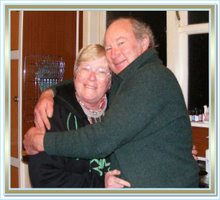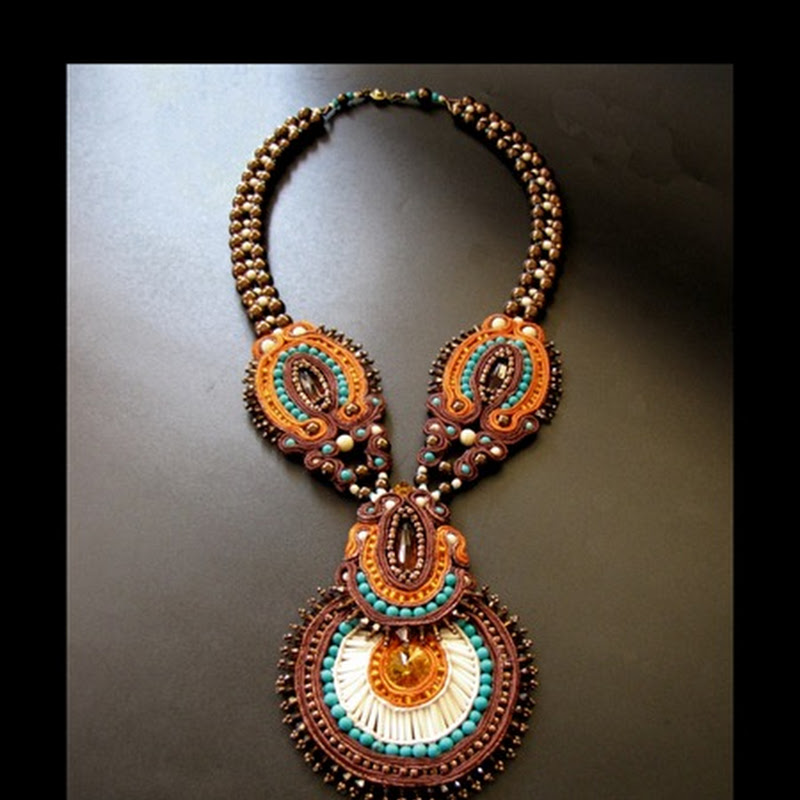One thing I have really missed since I have moved to New Zealand from America ten years ago are Nathan's Hot Dogs. I remember all to well the wonderful Independence Day Celebrations with Nathan's Hot Dogs on the barbecue. They have just got to be the juciest and the tastiest hot dogs in the world. I must admit too that they were so good in fact that I could often be seen stopping my car by a roadside stand with the large Nathan's umbrella displayed, indicating of course that "Here We Sell Nathan's". Those of you who have had them before can surely attest to the fact that they are so wonderful.
Well this month on July 23 is the celebration of National Hot Dog Day, so I thought I would post a little Hot Dog Trivia for those so inclined.
Hot Dogs Across America
Americans eat an unestimatable number of hot dogs each year. In restaurants and at street carts, ballparks and backyard barbeques - hot dogs are everywhere! But depending on where you purchase your hot dog, your toppings may differ radically. Here's our short guide on what to expect when you buy your hot dog away from home.
New York City: New Yorkers eat more hot dogs than any other group in the country. From downtown Manhattan to Coney Island, when you buy your hot dog in the Big Apple, it will come served with steamed onions and a pale, deli-style yellow mustard.
Chicago: The possible antithesis to New York dogs, Chicago dogs are layered with yellow mustard, dark green relish, chopped raw onion, tomato slices and topped with a dash of celery salt and served in a poppy seed bun.
Atlanta and the South: Buying a hot dog at Turner Field, home of the Atlanta Braves, or else where in Atlanta and the south, you'll end up with your dog "dragged through the garden" and topped with coleslaw.
Kansas City: Get the mints out - you'll need them when you order up a hot dog in KC as it is served with sauerkraut and melted Swiss cheese on a sesame seed bun.
Baseball Stadiums: Turner Field isn't the only place to get a hot dog styled to local preferences, here are some others to check out:
The Rockie Dog - served at Coors Field, the home of the Colorado Rockies - is a footlong dog with grilled peppers, kraut and onions.
The Fenway Frank - served at none other than Fenway Park - is the only dog to eat while watching the Red Sox. Its boiled and grilled and served in a New England style bun with mustard and relish.
The Texas Dog - chili, cheese and jalapenos make this the favored item at Minute Maid Park in Houston.
Other Regional Preferences: Midwesterners eat more pork and beef hot dogs than any other region of the country.
Westerners eat more poultry hot dogs than any other region of the country, however, southerns are a close second.
Easterns perfer all-beef hot dogs and consumer more than any other region of the country.
Americans consumed 20 billion hot dogs in 1999!
Americans will consume 7 billion hot dogs between Memorial Day and Labor Day.
Americans will eat 26 million hot dogs in major league ballparks -- that's enough to stretch from Yankee Stadium in New York City to Dodgers' Stadium in Los Angeles!
More hot dogs are eaten in Dodgers' Stadium -- an estimated 2.2 million -- than in any other Major League Ballpark in the country!
450 hot dogs are eaten every second of every day in the United States or an average of 65 per person per year.
Hot dogs are served in 95 % of the homes in the U.S.A.
Chicago’s O’Hare International Airport sells more Hot Dogs than any other location in the USA, over 2 million a year.
Mustard remains the most popular Hot Dog Topping. 87 % of Hot Dog eaters use mustard.
During the Fourth of July Weekend, Americans will enjoy 150 million hot dogs!
450 hot dogs are eaten every second of every day of every year, on average about 65 per person in the United States annually.
95 percent of homes serve hot dogs.
Most dogs are eaten at home, 15 percent purchased from street vendors. 9 percent bought at ball parks.
Mustard remains the hottest topping, used regularly by 87.6 percent of the eaters.
The top dog for most folks is the 6-incher, preferred by 48.3 percent of us: 26 percent like a 7-incher:
4 percent, the foot long.
Chicago's O' Hare International Airport sells more hot dogs than any single location in the world, more than 2 million a year.
Record dogs: a 1,983 foot hot dog was made in May 1983 by Bill-Mar Foods of Zeeland, Wis; a 2,377-foot chicken dog was made in 1985 by Maple Lodge Farms in Norval, Canada; in 1978, David Berg of Chicago made a six-foot 681-pound beef hot dog in a 100 pound poppy seed bun covered with two gallons of mustard.
Hot Dog Etiquette
Everyday guidance for eating America's sacred food
Don't...Put hot dog toppings between the hot dog and the bun. Always "dress the dog," not the bun.
Condiments should be applied in the following order: wet condiments like mustard and chili are applied first, followed by chunky condiments like relish, onions and sauerkraut, followed by shredded cheese, followed by spices, like celery salt or pepper.
Do...Serve sesame seed, poppy seed and plain buns with hot dogs. Sun-dried tomato buns or basil buns are considered gauche with franks.
Don't...Use a cloth napkin to wipe your mouth when eating a hot dog. Paper is always preferable.
Do...Eat hot dogs on buns with your hands. Utensils should not touch hot dogs on buns.
Do...Use paper plates to serve hot dogs. Every day dishes are acceptable; china is a no-no.
Don't...Take more than five bites to finish a hot dog. For foot-long wiener, seven bites are acceptable.
Don't...Leave bits of bun on your plate. Eat it all.
Don't...Fresh herbs on the same plate with hot dogs over-do the presentation
Don't...Use ketchup on your hot dog after the age of 18. Mustard, relish, onions, cheese and chili are acceptable.
Do...Condiments remaining on the fingers after eating a hot dog should be licked away, not washed.
Do...Use multi-colored toothpicks to serve cocktail wieners. Cocktail forks are in poor taste.
Don't...Send a thank you note following a hot dog barbecue. It would not be in keeping with the unpretentious nature of hot dogs.
Don't...Bring wine to a hot dog barbecue. Beer, soda, lemonade and iced tea are preferable.
Don't...Ever think there is a wrong time to serve hot dogs.
How Hot Dogs are Made: The Real Story
To see a video showing how hot dogs are made, go to
www.youtube.com/hotdogcouncil.
There are many tall tales about the way in which hot dogs are made, but the National Hot Dog and Sausage Council is eager to tell the real story.
First, specially selected meat trimmings of beef and/or pork -- just like the meat you buy in your grocer's case -- are cut or ground into small pieces and placed in a mixer. When poultry hot dogs are made, poultry trimmings are used.
High speed, stainless steel choppers blend the meat, spices, ice chips and curing ingredients into an emulsion or batter. The mixture is continuously weighed to assure a proper balance of all ingredients.
The mixture is then pumped into an automatic stuffer/linker machine, where it flows into casings. The most popular brands of hot dogs use cellulose casings, which are later removed. Some wieners use natural casings, which remain on the wiener when it is eaten. These wieners are considered more "traditional," are frequently made by smaller manufacturers and tend to cost a little more.
Once the casings are filled, they are linked into long strands of hot dogs and moved to the smokehouse, there they are fully cooked under controlled temperature and humidity conditions. They may be hardwood smoked for added color and flavor.
After passing through the smoke and cook cycle, the hot dogs are showered in cool water. If the hot dogs were made with cellulose casings, they are sent to an automatic peeler, where the cellulose "skin" is stripped away.
The individual links are then conveyed to the packaging equipment. When cellulose casings are used, the hot dogs are of exact size and weight. They are vacuum sealed in plastic films to protect the freshness and flavor of the hot dog. Because the casings on natural casings wieners are made from cleaned and processed animal intestines, they are of similar, but not exact, size.
Each package of hot dogs contains an ingredient statement, which lists everything that goes into the product. These days, it is less common to use variety meats such as hearts in hot dogs. When they are added, the package will clearly state "with variety meats." The particular variety meat used also will be listed in the ingredient statement. Nutrition labels also are included on hot dog packages, showing calories and nutrients per serving.
The entire process, from meat and poultry trimmings to being boxed and placed on the truck for delivery to retailers, can be measured in a matter of hours. The process also is carefully regulated and inspected for wholesomeness by the U.S. Department of Agriculture.

A Hot Dog Primer for Inquiring Minds
The National Hot Dog and Sausage Council receives hundreds of hot dog related questions each year. While most of these questions are easy for us - the hot dog gurus - to answer, other questions are nearly impossible to answer. Below are some frequently asked questions.
Why are there typically 10 hot dogs per pack and eight buns per bag?
Ah, one of the great mysteries of the universe. You would think the makers of these two inherently linked items would collaborate on this. These days, manufacturers are starting to offer different quantities of hot dogs per pack and bakers are breaking out of the eight-to-the-pack mold and offering 10 and even 12 packs of buns. However, this is the exception to the rule.
When hot dog buns were introduced, hot dogs were sold in varying quantities at the butcher shop. Not until 1940 were hot dogs packaged the way we currently see them in the grocery store. When manufacturers began packaging hot dogs, they chose the 10 to the pack formula. Today hot dogs are sold most often in eight or ten to the pound packs, but some are sold other quantities as well.
Sandwich rolls, or hot dog buns, most often come eight to the pack because the buns are baked in clusters of four in pans designed to hold eight rolls. While baking pans now come in configurations that allow baking 10 and even 12 at a time, the eight roll pan remains the most popular.
However, to save you from the bread aisle arithmetic anxiety, you need to purchase five bags of eight-to-the-pack buns and four 10-to-the-pack hot dogs to break even.
Why are hot dogs and baseball linked?
As the legend goes, frankfurters were dubbed the "hot dog" by a cartoonist who observed a vendor selling the "hot daschund sausages" during a baseball game at New York City's Polo Grounds. Concessionaires walked through the stands shouting "Get your red-hot dachshund sausages." In 1906, Tad Dorgan, a cartoonist for a Hearst newspaper, was inspired by the scene and sketched a cartoon with a real dachshund dog, smeared with mustard, in a bun. Supposedly, Dorgan could not spell the name of the dog, instead writing "get your hot dogs" for a caption. However, Dorgan's cartoon has never been located and some hot dog historians suggest the "dachshund" sausages were being called hot dogs on college campuses in the 1890s. "Little dog" sausages became standard fare at ballparks in 1893 when St. Louis bar owner and German immigrant Chris Von de Ahe, who owned the St. Louis Browns baseball team.
Besides its early association with baseball parks, hot dogs are easy to prepare, inexpensive and easily portable making them the perfect food to enjoy while cheering on a favorite team. Hot dogs are considered a fun summertime food, eaten most often between Memorial Day and Labor Day - coinciding with the peak of baseball season.
And while we're on the subject of street carts, just how many hot dog are sold on the Fourth of July at street carts in New York City?
Figuring out the precise number of hot dogs sold at specific locations or on specific days is nearly impossible. Street carts don't publish sales figures and dividing hot dog sales down to days would be an exhausting job.
We do know that the southern United States eats the bulk of all hot dogs each year - more than any other region of the country. Residents of New York City purchase more hot dogs at retail outlets (grocery stores, supermarkets, etc.) than any other city in the country - over $101 billion dollars worth. And travelers passing through Chicago's O'Hare International Airport consumer more hot dogs there than LaGuardia in New York and Los Angeles International.
For more detailed statistics on regional consumption of hot dogs and sausages, contact
Information Resources, Inc. or
AC Nielsen.
How many hot dogs do Americans eat each year and where do they eat them?
According to recent survey data obtained by the Council, Americans purchase 350 million pounds of hot dogs at retail stores - that's 9 billion hot dogs! But the actual number of hot dogs consumed by Americans is probably much larger. It is difficult to calculate the number of hot dogs Americans may eat at sporting events, local picnics and carnivals. The Council estimates Americans consume 20 billion hot dogs a year - more than twice the retail sales figures. That works out to about 70 hot dogs per person each year. Hot dogs are served in 95 percent of homes in the United States. Fifteen percent of hot dogs are purchased from street vendors and 9 percent are purchased at ballparks, according to statistics from the Heartland Buffalo Company.
What exactly is in a hot dog?
The ingredients in hot dogs have been the subject of much humor, rumor and speculation. But the answer is less exciting than the question.
All hot dogs are cured and cooked sausages that consist of mainly pork, beef, chicken and turkey or a combination of meat and poultry. Meats used in hot dogs come from the muscle of the animal and looks much like what you buy in the grocer's case. Other ingredients include water, curing agents and spices, such as garlic, salt, sugar, ground mustard, nutmeg, coriander and white pepper.
If variety meats such as liver and hearts are used in processed meats, the U.S. Department of Agriculture requires the manufacturer to declare those ingredients on the package with the statement "with variety meats" or "with meat by-products." The manufacturer must then specify which variety meat is included. In the U.S., companies are required to list ingredients in order, from the main ingredient, to the least ingredient.

I bet some of you didn't know there was even a day in the year cycle that celebrated the Great American Hot Dog....well doggone it...now you do! :-)
Patricia







 I bet some of you didn't know there was even a day in the year cycle that celebrated the Great American Hot Dog....well doggone it...now you do! :-)
I bet some of you didn't know there was even a day in the year cycle that celebrated the Great American Hot Dog....well doggone it...now you do! :-)




















